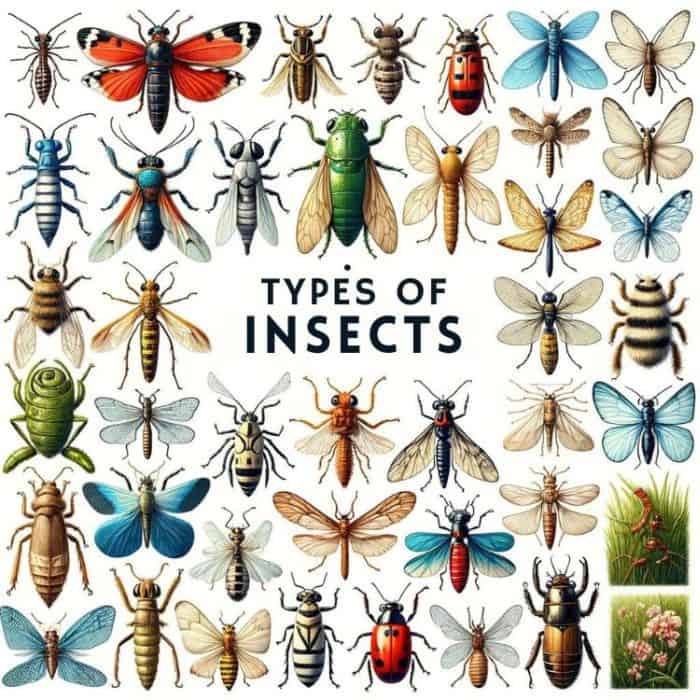
Insect Orders: Insects are an incredibly diverse group of arthropods in the class Insecta. They are characterized by their three-part bodies (head, thorax, and abdomen), three pairs of jointed legs, compound eyes, and antennae. Insects play vital roles in ecosystems, from pollination and decomposition to serving as food for many animals.
The study of insects is called Entemology, which is a branch of Zoology.
Table of Contents
Insect Orders
Let’s explore 28 major insect orders under the class Insecta as per ITIS’s currently accepted & validated classification. In the following sections, we will explore each order’s characteristics and example species.
Archaeognatha
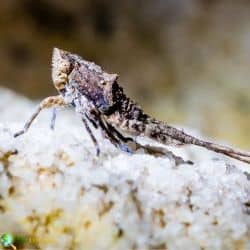 Archaeognatha, or jumping bristletails, are primitive, wingless insects with elongated bodies, long antennae, and large compound eyes. They have a unique ability to jump using their tail-like cerci. Typically found in leaf litter and under stones, they are known for their agility and primitive body structure.
Archaeognatha, or jumping bristletails, are primitive, wingless insects with elongated bodies, long antennae, and large compound eyes. They have a unique ability to jump using their tail-like cerci. Typically found in leaf litter and under stones, they are known for their agility and primitive body structure.
Examples: Jumping bristletail, Machilidae species, Petrobius maritimus
Blattodea
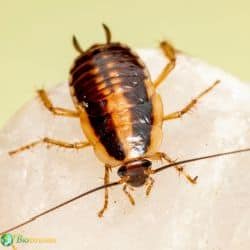 Blattodea includes cockroaches and termites. These insects have flattened bodies and chewing mouthparts. Cockroaches are often associated with decaying organic matter, while termites are known for their social colonies and wood-eating habits. Termites are important decomposers in ecosystems, while cockroaches are often considered pests.
Blattodea includes cockroaches and termites. These insects have flattened bodies and chewing mouthparts. Cockroaches are often associated with decaying organic matter, while termites are known for their social colonies and wood-eating habits. Termites are important decomposers in ecosystems, while cockroaches are often considered pests.
Examples: American cockroach (Periplaneta americana), German cockroach (Blattella germanica), Eastern subterranean termite (Reticulitermes flavipes)
Coleoptera
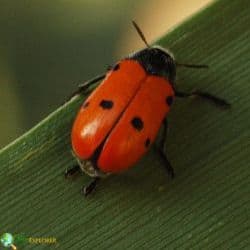 Coleoptera is the largest order of insects, encompassing beetles and weevils. They are characterized by their hardened forewings (elytra), which cover the membranous flight wings. Beetles are highly diverse, inhabiting nearly every ecological niche and playing various roles in the environment, from decomposers to predators.
Coleoptera is the largest order of insects, encompassing beetles and weevils. They are characterized by their hardened forewings (elytra), which cover the membranous flight wings. Beetles are highly diverse, inhabiting nearly every ecological niche and playing various roles in the environment, from decomposers to predators.
Examples: Ladybug (Coccinellidae), Hercules beetle (Dynastes hercules), Japanese beetle (Popillia japonica)
Dermaptera
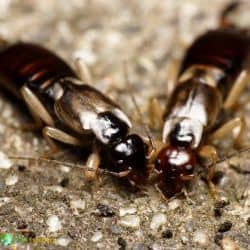 Dermaptera, or earwigs, are recognized by their elongated bodies, pincers on the abdomen, and membranous wings folded under short, hard forewings. They are mostly nocturnal and omnivorous, often found in moist environments. Earwigs use their pincers for defense and sometimes for capturing prey.
Dermaptera, or earwigs, are recognized by their elongated bodies, pincers on the abdomen, and membranous wings folded under short, hard forewings. They are mostly nocturnal and omnivorous, often found in moist environments. Earwigs use their pincers for defense and sometimes for capturing prey.
Examples: Common earwig (Forficula auricularia), Saint Helena earwig (Labidura herculeana), Striped earwig (Labidura riparia)
Diptera
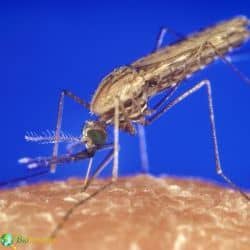 Diptera includes flies, mosquitoes, and midges. They are characterized by having a single pair of wings, with the second pair reduced to halteres, which helps balance. Dipterans have varied mouthparts adapted for sucking, lapping, or piercing, and they are known for their roles in pollination, decomposition, and as disease vectors.
Diptera includes flies, mosquitoes, and midges. They are characterized by having a single pair of wings, with the second pair reduced to halteres, which helps balance. Dipterans have varied mouthparts adapted for sucking, lapping, or piercing, and they are known for their roles in pollination, decomposition, and as disease vectors.
Examples: Housefly (Musca domestica), Mosquito (Anopheles gambiae), Fruit fly (Drosophila melanogaster)
Embioptera
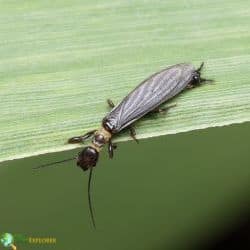 Embioptera, or webspinners, are small, elongated insects capable of spinning silk from glands in their front legs. They create intricate silk galleries often found in tropical and subtropical regions. Webspinners live in colonies and use their silk to create protective habitats.
Embioptera, or webspinners, are small, elongated insects capable of spinning silk from glands in their front legs. They create intricate silk galleries often found in tropical and subtropical regions. Webspinners live in colonies and use their silk to create protective habitats.
Examples: Common webspinner (Oligotoma saundersii), Australembia incompta, Embia major
Ephemeroptera
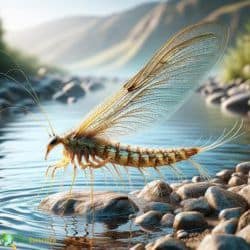 Ephemeroptera, or mayflies, have delicate, membranous wings and short adult lifespans. Their aquatic larvae, known as naiads, are important water quality indicators. Mayflies are unique because adults do not feed and live only a few days, primarily to mate and lay eggs.
Ephemeroptera, or mayflies, have delicate, membranous wings and short adult lifespans. Their aquatic larvae, known as naiads, are important water quality indicators. Mayflies are unique because adults do not feed and live only a few days, primarily to mate and lay eggs.
Examples: Green drake mayfly (Ephemera danica), Giant Mayfly (Hexagenia limbata), large dark olive mayfly (Baetis rhodani)
Grylloblattodea
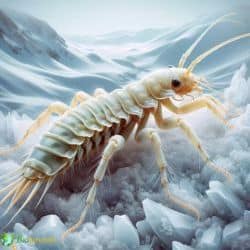 Grylloblattodea, or rock crawlers, are wingless, elongated insects adapted to cold environments. They are nocturnal and predatory, often found in ice caves and high-altitude regions. Rock crawlers are rare and are known for their ability to survive in extreme cold.
Grylloblattodea, or rock crawlers, are wingless, elongated insects adapted to cold environments. They are nocturnal and predatory, often found in ice caves and high-altitude regions. Rock crawlers are rare and are known for their ability to survive in extreme cold.
Examples: Rock crawler (Grylloblatta campodeiformis), Large Stonefly (Namkungia magna), Galloisiana nipponensis
Hemiptera
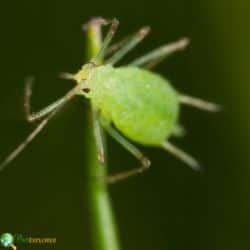 Hemiptera, or true bugs, possess piercing-sucking mouthparts and often have two pairs of wings, with the front pair partially hardened. This diverse order includes aphids, Cicadas, and shield bugs. Hemipterans can be plant feeders, predators, or Parasites; many are significant agricultural pests.
Hemiptera, or true bugs, possess piercing-sucking mouthparts and often have two pairs of wings, with the front pair partially hardened. This diverse order includes aphids, Cicadas, and shield bugs. Hemipterans can be plant feeders, predators, or Parasites; many are significant agricultural pests.
Examples: Green stink bug (Chinavia hilaris), Aphid (Aphidoidea), Cicada (Magicicada septendecim)
Hymenoptera
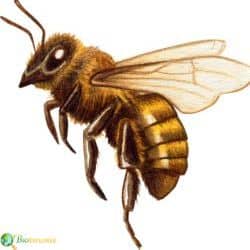 Hymenoptera contains Bees, Wasps, ants, and sawflies. They are characterized by two pairs of wings, a narrow waist, and often complex social structures. Many hymenopterans play crucial roles in pollination and biological control, and some, like ants and bees, live in highly organized colonies.
Hymenoptera contains Bees, Wasps, ants, and sawflies. They are characterized by two pairs of wings, a narrow waist, and often complex social structures. Many hymenopterans play crucial roles in pollination and biological control, and some, like ants and bees, live in highly organized colonies.
Examples: Honeybee (Apis mellifera), Yellowjacket (Vespula vulgaris), Red imported fire ant (Solenopsis invicta)
Lepidoptera
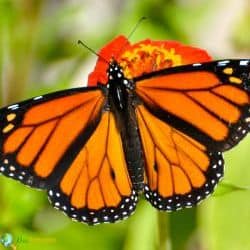 Lepidoptera has butterflies and moths. They are known for their scaled wings and coiled proboscis, which are used to feed on nectar and undergo complete metamorphosis. This order is renowned for its diversity and ecological importance, with many species serving as pollinators.
Lepidoptera has butterflies and moths. They are known for their scaled wings and coiled proboscis, which are used to feed on nectar and undergo complete metamorphosis. This order is renowned for its diversity and ecological importance, with many species serving as pollinators.
Examples: Monarch butterfly (Danaus plexippus), Luna moth (Actias luna), Cabbage white (Pieris rapae)
Mantodea
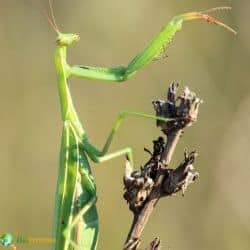 Mantodea, or praying mantises, are predatory insects recognized by their raptorial forelegs adapted for catching prey. They have elongated bodies and triangular heads with large compound eyes. Mantises are solitary hunters and are known for their ambush tactics.
Mantodea, or praying mantises, are predatory insects recognized by their raptorial forelegs adapted for catching prey. They have elongated bodies and triangular heads with large compound eyes. Mantises are solitary hunters and are known for their ambush tactics.
Examples: European mantis (Mantis religiosa), Chinese mantis (Tenodera sinensis), Carolina mantis (Stagmomantis carolina)
Mantophasmatodea
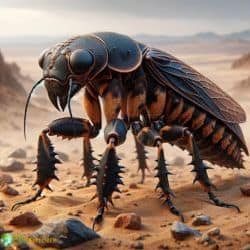 Mantophasmatodea, or heelwalkers, are a small and recently discovered order (2002). These predatory insects exhibit a mix of features from mantises and stick insects, with elongated bodies and well-developed legs for walking. They are primarily found in Africa.
Mantophasmatodea, or heelwalkers, are a small and recently discovered order (2002). These predatory insects exhibit a mix of features from mantises and stick insects, with elongated bodies and well-developed legs for walking. They are primarily found in Africa.
Examples: Heelwalker (Mantophasma zephyrum), Karoophasma biedouwense, Mantophasma kudubergense
Mecoptera
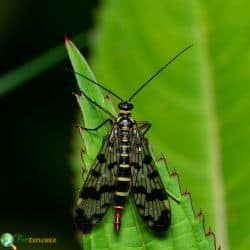 Mecoptera contains scorpionflies and hangingflies. These insects have elongated faces forming a beak, and males of some species possess scorpion-like tails. They are often found in moist environments and are known for their complex mating behaviors.
Mecoptera contains scorpionflies and hangingflies. These insects have elongated faces forming a beak, and males of some species possess scorpion-like tails. They are often found in moist environments and are known for their complex mating behaviors.
Examples: Common scorpionfly (Panorpa communis), Snow scorpionfly (Boreus hyemalis), Hangingfly (Bittacus apicalis)
Megaloptera
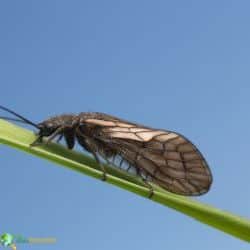 Megaloptera comprises alderflies, dobsonflies, and fishflies. These insects have large, membranous wings and aquatic larvae with biting mouthparts, while adults have strong mandibles. Megalopterans are often found near water bodies like Ephemeroptera species, where their larvae are important aquatic predators.
Megaloptera comprises alderflies, dobsonflies, and fishflies. These insects have large, membranous wings and aquatic larvae with biting mouthparts, while adults have strong mandibles. Megalopterans are often found near water bodies like Ephemeroptera species, where their larvae are important aquatic predators.
Examples: Dobsonfly (Corydalus cornutus), Alderfly (Sialis lutaria), Fishfly (Chauliodes pectinicornis)
Neuroptera
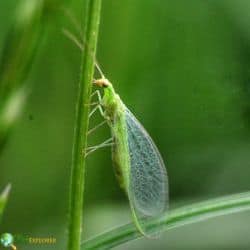 Neuroptera includes lacewings, antlions, and owlflies. They are characterized by their delicate, veined wings, predatory larvae, and soft-bodied adults. Neuropterans are beneficial insects, often used in biological control for their predation on pests.
Neuroptera includes lacewings, antlions, and owlflies. They are characterized by their delicate, veined wings, predatory larvae, and soft-bodied adults. Neuropterans are beneficial insects, often used in biological control for their predation on pests.
Examples: Green lacewing (Chrysoperla carnea), Antlion (Myrmeleon formicarius), Brown lacewing (Hemerobius humulinus)
Odonata
 Odonata includes dragonflies and damselflies. These insects have large compound eyes, two pairs of strong, transparent wings, and elongated bodies. They are skilled fliers and predators, with aquatic larvae that are also predatory.
Odonata includes dragonflies and damselflies. These insects have large compound eyes, two pairs of strong, transparent wings, and elongated bodies. They are skilled fliers and predators, with aquatic larvae that are also predatory.
Examples: Common blue damselfly (Enallagma cyathigerum), Common darter dragonfly (Sympetrum striolatum), Emperor dragonfly (Anax imperator)
Orthoptera
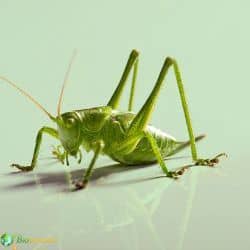 Orthoptera includes grasshoppers, crickets, and locusts. These insects are known for their large hind legs adapted for jumping and often produce sound by StridulationWhat is Stridulation?Stridulation is a sound production method used by insects like crickets and grasshoppers, involving the rubbing together of specialized body parts, such as wings or legs. This noise is typically used for communication, including attracting mates and signaling territory.. Orthopterans are primarily herbivorous and can be significant agricultural pests.
Orthoptera includes grasshoppers, crickets, and locusts. These insects are known for their large hind legs adapted for jumping and often produce sound by StridulationWhat is Stridulation?Stridulation is a sound production method used by insects like crickets and grasshoppers, involving the rubbing together of specialized body parts, such as wings or legs. This noise is typically used for communication, including attracting mates and signaling territory.. Orthopterans are primarily herbivorous and can be significant agricultural pests.
Examples: House cricket (Acheta domesticus), Desert locust (Schistocerca gregaria), Katydid (Tettigonia viridissima)
Phasmida
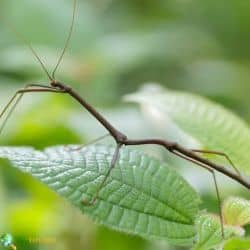 Phasmida, or stick insects and leaf insects, are renowned for their camouflage abilities. They have elongated bodies and are herbivorous, mimicking twigs or leaves to avoid predators. Phasmids are mostly nocturnal and can regenerate lost limbs.
Phasmida, or stick insects and leaf insects, are renowned for their camouflage abilities. They have elongated bodies and are herbivorous, mimicking twigs or leaves to avoid predators. Phasmids are mostly nocturnal and can regenerate lost limbs.
Examples: Indian stick insect (Carausius morosus), Giant prickly stick insect (Extatosoma tiaratum), Leaf insect (Phyllium bioculatum)
Plecoptera
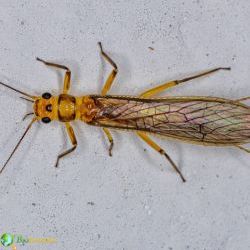 Plecoptera, or stoneflies, have two pairs of membranous wings and aquatic nymphs. Adults have long, filamentous antennae and are often found near freshwater habitats. Stoneflies are important water quality indicators similar to Plecoptera insects, with nymphs being sensitive to pollution.
Plecoptera, or stoneflies, have two pairs of membranous wings and aquatic nymphs. Adults have long, filamentous antennae and are often found near freshwater habitats. Stoneflies are important water quality indicators similar to Plecoptera insects, with nymphs being sensitive to pollution.
Examples: Golden stonefly (Perlidae), Common stonefly (Perla marginata), Winter stonefly (Taeniopteryx)
Psocodea
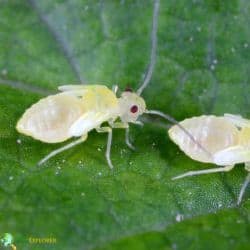 Psocodea includes booklice, barklice, and true lice. These small, soft-bodied insects often have reduced or absent wings and exhibit diverse feeding habits, from scavenging to parasitism. Psocodeans are found in various habitats, including human dwellings and on host animals.
Psocodea includes booklice, barklice, and true lice. These small, soft-bodied insects often have reduced or absent wings and exhibit diverse feeding habits, from scavenging to parasitism. Psocodeans are found in various habitats, including human dwellings and on host animals.
Examples: Booklouse (Liposcelis bostrychophila), Human louse (Pediculus humanus), Barklouse (Psocidae)
Raphidioptera
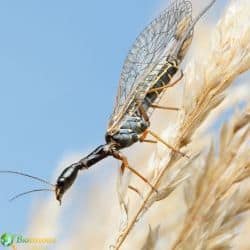 Raphidioptera, or snakeflies, are elongated insects with long necks and predatory habits. They are named for their snake-like appearance and are typically found in temperate regions. Snakeflies are important predators of other small arthropods.
Raphidioptera, or snakeflies, are elongated insects with long necks and predatory habits. They are named for their snake-like appearance and are typically found in temperate regions. Snakeflies are important predators of other small arthropods.
Examples: Snakefly (Raphidia ophiopsis), Xanthostigma xanthostigma, Agrifemina nitida
Siphonaptera
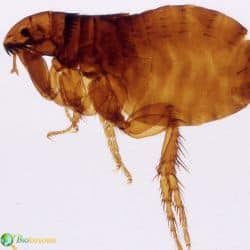 Siphonaptera, or fleas, are wingless, laterally compressed insects adapted for jumping and parasitic feeding. They are known for their ability to transmit diseases and infest warm-blooded animals such as dogs and cats. Fleas have strong legs for jumping and mouthparts for piercing skin and sucking blood.
Siphonaptera, or fleas, are wingless, laterally compressed insects adapted for jumping and parasitic feeding. They are known for their ability to transmit diseases and infest warm-blooded animals such as dogs and cats. Fleas have strong legs for jumping and mouthparts for piercing skin and sucking blood.
Examples: Cat flea (Ctenocephalides felis), Dog flea (Ctenocephalides canis), Human flea (Pulex irritans)
Strepsiptera
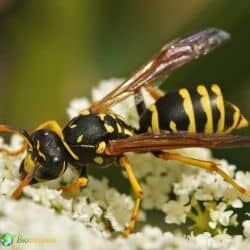 Strepsiptera, or twisted-wing parasites, are an unusual group of endoparasitic insects. Males have twisted wings, while females are often wingless and remain inside their hosts. Strepsipterans parasitize various insects, including bees and wasps.
Strepsiptera, or twisted-wing parasites, are an unusual group of endoparasitic insects. Males have twisted wings, while females are often wingless and remain inside their hosts. Strepsipterans parasitize various insects, including bees and wasps.
Examples: Xenos peckii, Stylops melittae, Halictophagidae species
Thysanoptera
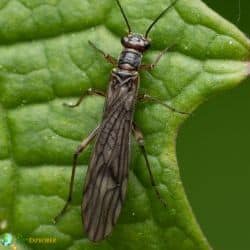 Thysanoptera, or thrips, are tiny, slender insects with fringed wings. They are often plant feeders, using their piercing-sucking mouthparts to extract plant sap. Thrips can be significant agricultural pests, damaging crops and transmitting plant diseases.
Thysanoptera, or thrips, are tiny, slender insects with fringed wings. They are often plant feeders, using their piercing-sucking mouthparts to extract plant sap. Thrips can be significant agricultural pests, damaging crops and transmitting plant diseases.
Examples: Western flower thrips (Frankliniella occidentalis), Onion thrips (Thrips tabaci), Greenhouse thrips (Heliothrips haemorrhoidalis)
Trichoptera
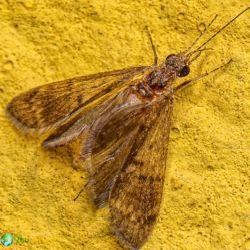 Trichoptera, or caddisflies, have aquatic larvae that build protective cases from various materials. Adults resemble moths but have hairy wings and are important in freshwater ecosystems. Caddisfly larvae are important water quality indicators and key players in aquatic food webs.
Trichoptera, or caddisflies, have aquatic larvae that build protective cases from various materials. Adults resemble moths but have hairy wings and are important in freshwater ecosystems. Caddisfly larvae are important water quality indicators and key players in aquatic food webs.
Examples: Hydropsyche angustipennis, Limnephilus lunatus, Phryganea grandis
Zoraptera
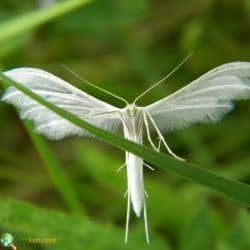 Zoraptera, or angel insects, are small, wingless, or weakly winged insects often found in decaying wood or leaf litter. They are known for their simple body structure and gregarious behavior. Angel insects are rare and have limited diversity.
Zoraptera, or angel insects, are small, wingless, or weakly winged insects often found in decaying wood or leaf litter. They are known for their simple body structure and gregarious behavior. Angel insects are rare and have limited diversity.
Examples: Zorotypus hubbardi, Zorotypus snyderi, Zorotypus gurneyi
Zygentoma
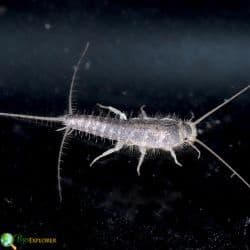 Zygentoma includes silverfish and firebrats. These primitive, wingless insects have elongated bodies and long antennae. They are typically found in moist environments like basements and bathrooms. Zygentomans are scavengers, feeding on a variety of organic materials.
Zygentoma includes silverfish and firebrats. These primitive, wingless insects have elongated bodies and long antennae. They are typically found in moist environments like basements and bathrooms. Zygentomans are scavengers, feeding on a variety of organic materials.
Examples: Silverfish (Lepisma saccharina), Firebrat (Thermobia domestica), Ctenolepisma longicaudata
Insect Order Classifications
Here is the table that shows the chronological order of these 28 major insect orders sorted by year of classification and the taxonomist, starting from the earliest to current.
| Coleoptera | Carl Linnaeus | 1758 |
| Diptera | Carl Linnaeus | 1758 |
| Hemiptera | Carl Linnaeus | 1758 |
| Hymenoptera | Carl Linnaeus | 1758 |
| Lepidoptera | Carl Linnaeus | 1758 |
| Neuroptera | Carl Linnaeus | 1758 |
| Dermaptera | Charles De Geer | 1773 |
| Orthoptera | Guillaume-Antoine Olivier | 1789 |
| Odonata | Johan Christian Fabricius | 1793 |
| Megaloptera | Pierre Andréé Latreille | 1802 |
| Strepsiptera | William Kirby | 1813 |
| Trichoptera | William Kirby | 1813 |
| Phasmida | William Elford Leach | 1815 |
| Siphonaptera | Pierre Andréé Latreille | 1825 |
| Thysanoptera | Alexander Henry Haliday | 1836 |
| Mantodea | Hermann Burmeister | 1838 |
| Plecoptera | Hermann Burmeister | 1839 |
| Blattodea | Carl Brunner von Wattenwyl | 1882 |
| Ephemeroptera | Alpheus Hyatt and Gardner Arms | 1891 |
| Mecoptera | Alpheus Hyatt and Gardner Arms | 1891 |
| Archaeognatha | Carl Böörner | 1904 |
| Zygentoma | Carl Böörner | 1904 |
| Embioptera | Hermann August Krauss | 1911 |
| Zoraptera | Filippo Silvestri | 1913 |
| Grylloblattodea | Edmund Walker | 1914 |
| Raphidioptera | Longinos Naváás | 1916 |
| Psocodea | Christopher H.C. Lyal | 1985 |
| Mantophasmatodea | Klass, Zompro, Kristensen, & Adis | 2002 |
![]()
















